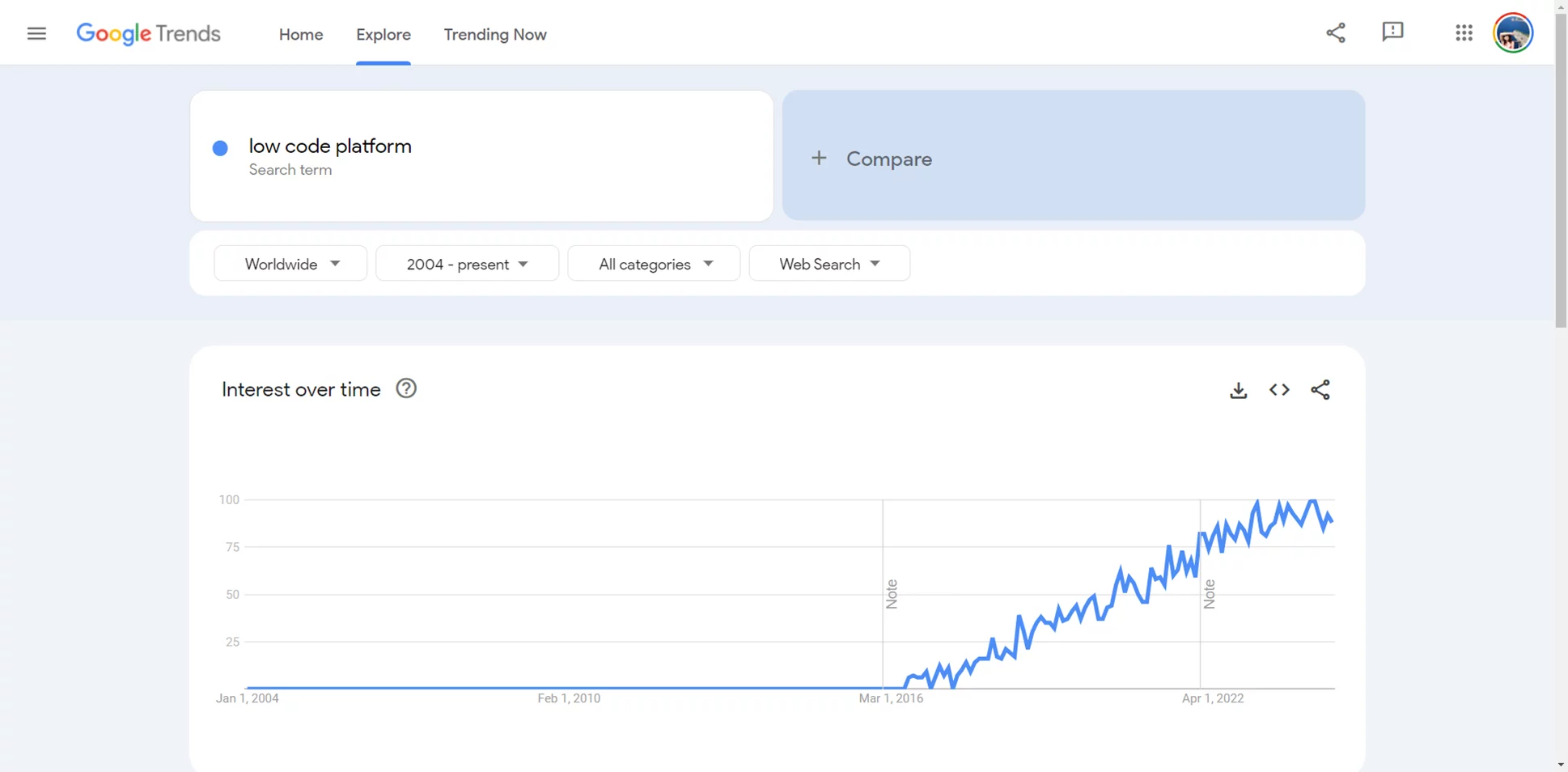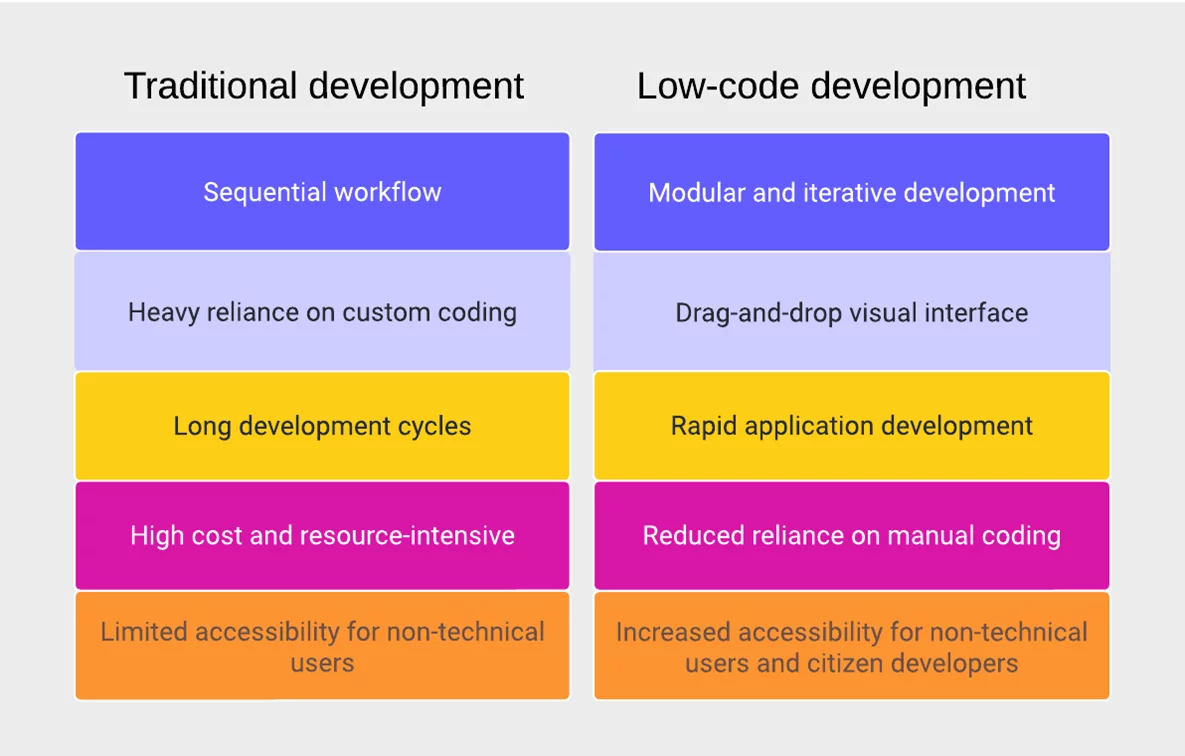Why low-code is a trend in the world of business applications
Anzhela Pozdniakova, Business Architect, Xpand:
Introduction
Software ads that mention low-code or no code as part of their advantages are increasingly catching the eye. If we look at Google Trends, we will see that starting from 2016 a new trend has appreared in internet searches with people specifically looking for low code platforms. In my opinion, this trend has not reached its plateau yet, while demand for low code applications most probably will continue to grow, and will be a lasting phenomemon. Xpand is also one of the early-bird vendors of a platform with low code philosophy – our Xpand Portal, product with the same approach saw the world more than 7 years ago.
But what’s the fuss about low-code? What does it even mean? What is the value of it? Why would a business want to choose such an application? If these are the things you wonder about, let’s clear them up a bit.
Let’s imagine that you are dreaming up some customer portal for your business. What do you see? Probably, a login page to start with, some lists with information, some cards with nicely organized tabs, some buttons with functional meaning, possibility to sort, filter, etc. Of course, the system must be secure and access to data must be properly limited for users. It is like a no-brainer! Every application needs that! Low-code platforms address this need with a base set of must haves (permissions, security, login & access management) and ready UI components which you can just pull together to get the pages you want. No headache taking design decisions or hiring a team of developers for building pages from full scratch, you can just use pre-designed user interface components and templates. If you are into such activity yourself, you can be your own creator of your portal.
When saying “pull together”, I did not exaggerate. Typically, low-code platforms contain a visual configurator allowing simple dragging and dropping elements onto desired pages places. Even if dragging and dropping feature is not there, page creation can be similar to LEGO constructor.
Low-code platforms are not just about pages, but also business workflows that may need to be facilitated within them. Depending on the platform’s intended market and focus on business logic, you can expect features that allow configuring some automated business workflows such as approval processes, notifications, validations and calculations. Typically, these tools are designed to operate with variables defined during setup, offering significant flexibility for the configurator.
The beauty of low-code (as opposed to no code) is that it requires minimal or no hand coding to get a functional application, however, does not exclude it. This means that a lot can be achieved via just configuration, but, if needed, any custom logic can be added via coding.
Because low-code platforms are a relatively new trend, they often have top-notch features such as APIs and connectors, which have become an increasing must have in nowadays world, where businesses seek ways to replace verbal and written communication with the partners, customers and informational vendors via Integration.
Interested in reading more articles written by Anzhela Pozdniakova? Please read about 10 don’ts when designing customizations in Microsoft Dynamics 365 Business Central or Consolidation for Dummies.
Why low-code is a great choice for businesses?
Firstly, it is quite cost-effective, reducing development costs by minimizing the need for custom coding. This means you can allocate resources more efficiently, prevent project overruns, and achieve a faster return on investment for your software projects.
Secondly, low-code platforms offer higher speed and efficiency, thanks to their visual interfaces, drag-and-drop functionality, and pre-built templates, allowing you to roll out new functionalities quickly and respond swiftly to changing business needs. Additionally, low-code promotes resource optimization by requiring fewer profiles, making software development accessible to non-technical users, and empowering citizen developers within your organization.
Moreover, its agility and flexibility enable you to adapt and iterate applications rapidly in response to user feedback and evolving requirements, helping you stay competitive in a rapidly changing environment.
Lastly, low-code platforms democratize software development, making it accessible to a broader audience and fostering collaboration, innovation, and creativity within your organization.

When low-code is not the best option
While low-code platforms offer significant cost and time savings, it is crucial to recognize that they may come with limitations: In case the platform is not focused on your intended application area, it may lack needed business process automations that you will need to configure a fully functional application. At the same time, making extensive customizations may require deeper analysis in order for the new changes to be compliant with the general architecture and other features.
Conclusion
The emergence of the low-code represents a transformative revolution similar to the Industrial Revolution led by pioneers like Henry Ford. Just as Ford's assembly line revolutionized manufacturing, low-code platforms are revolutionizing software development by making it more accessible, optimizing processes, and empowering individuals to innovate without extensive coding knowledge. This paradigm shift in technology not only accelerates digital transformation but also broadens the creation of software solutions, paving the way for a more inclusive and agile approach to problem-solving in our increasingly digital world.
At Xpand, we are excited to be part of this revolution. Our Xpand Portal solution is designed to help businesses thrive with the rise of accessible digital products.
Do you happen to have any knowledge about Xpand Portal?
Xpand Portal is a web-based solution with over 7 years of market presence that provides a comprehensive and customizable product for businesses looking to streamline access to their various data sources, such as ERP and CRM systems, and improve companies’ overall productivity. It is designed to be simple and easy to use, with quick and intuitive configuration to meet your specific needs.
To learn how Xpand Portal can help you meet your business needs, request a demo.
More about Xpand Portal can be found here.

